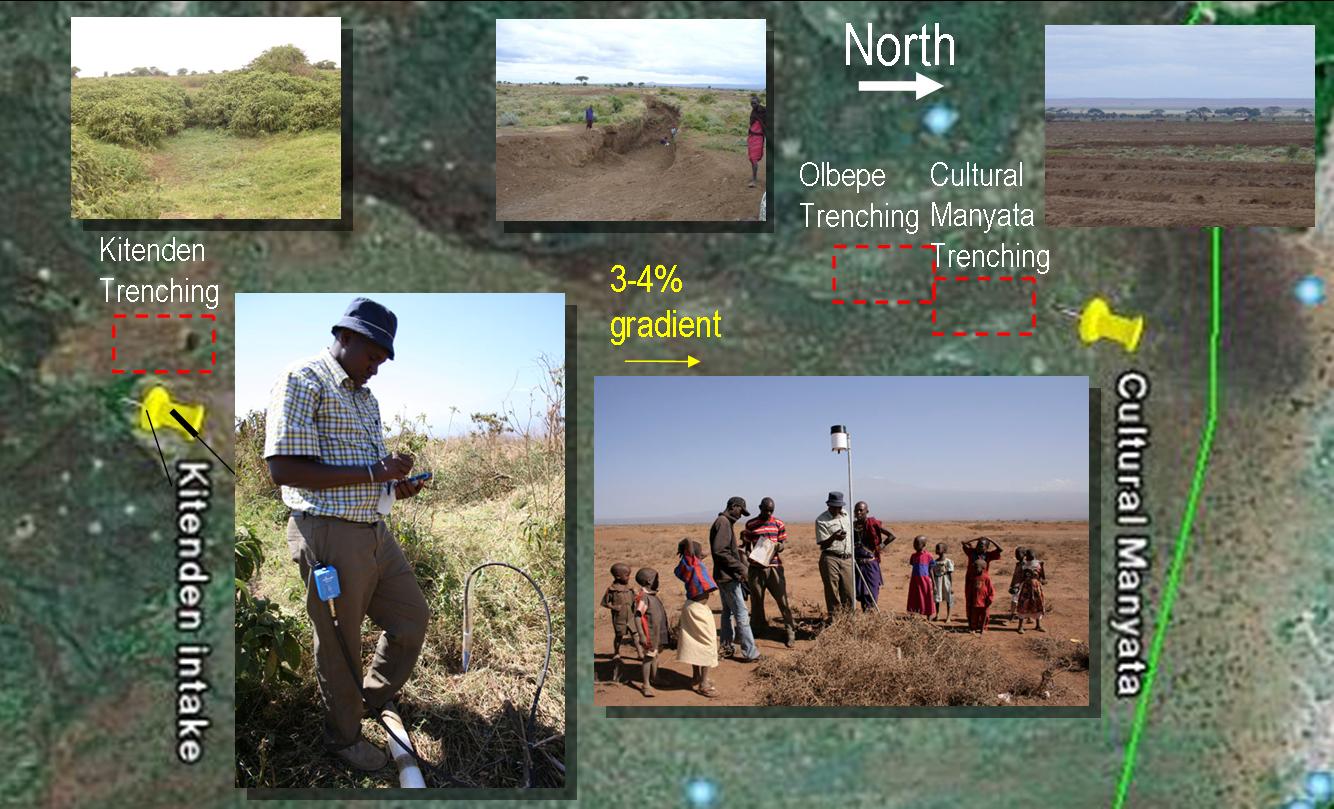The long term impacts of contour trenching in Amboseli, Kenya
Contour trenching tends to be potential in recharging the groundwater system for future abstraction and provide additional soil moisture in the root zone for vegetation growth. There is still a large interest on the hydrological studies concerning the water distribution and partition of this technique at different areas and different development stage. Therefore, to quantify the effects of contour trenching in Kenya, a monitoring campaign was set up in 2010.
Previous studies indicate that the rainfall events are two seasons annually and the main soil type found at the site is dominantly by clay. To what extent contour trenching recharges the groundwater is also unknown since no monitoring data is available. The groundwater depth is up to 75 m below the surface. Thus, infiltrated water seems to be more beneficial as additional soil water for vegetation growth. Using radioactive cesium analysis, one could indicate the soil redistribution due to erosion and sedimentation at trench plot. The combination of monitoring campaign, cesium analysis and hydrological modeling (Hydrus 2-D or and MODHMS) may explain how water distribution and partition altered in time due to contour trenching. Also, the impact of contour trenching to vegetation growth has not been taken into account yet. Therefore, remote sensing analysis will be performed to confirm its impact to vegetation growth.
